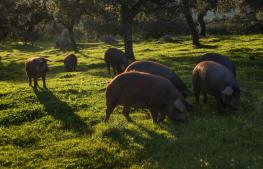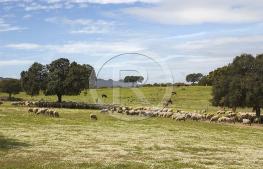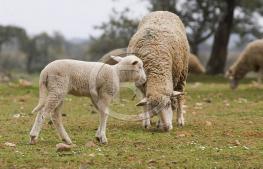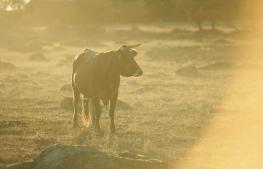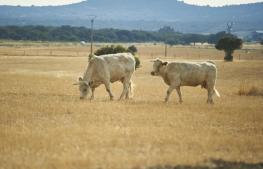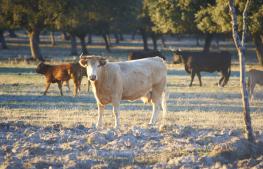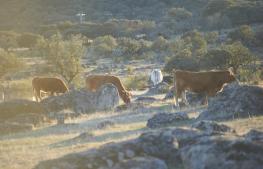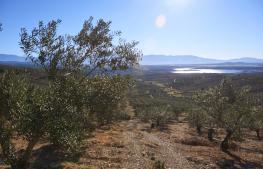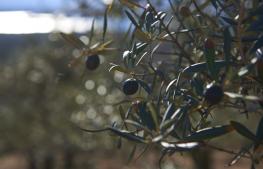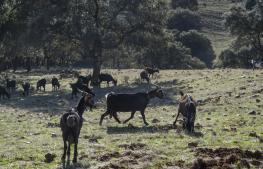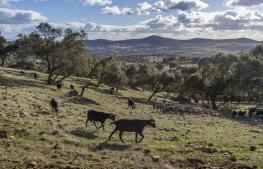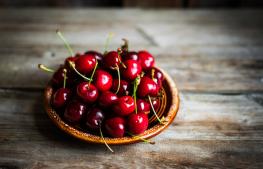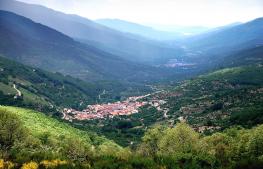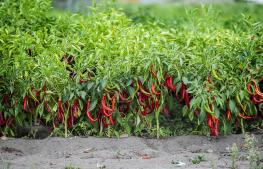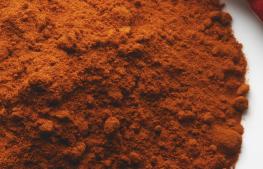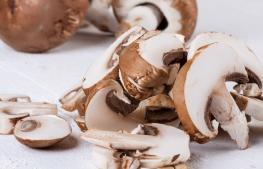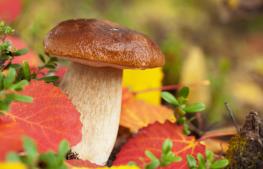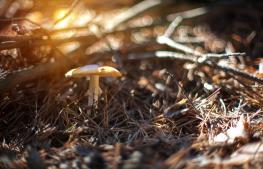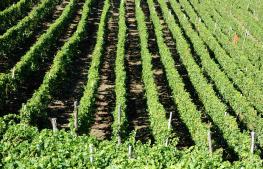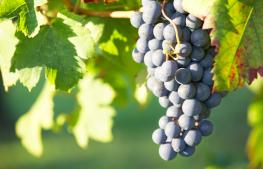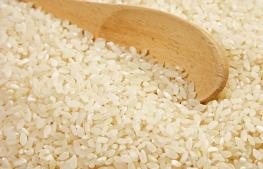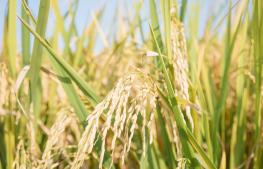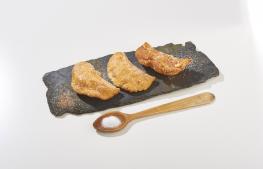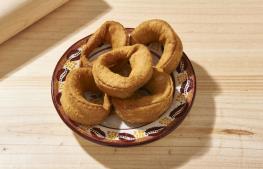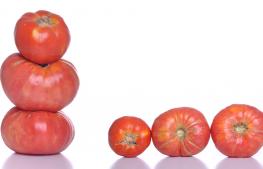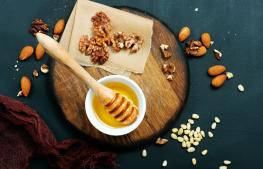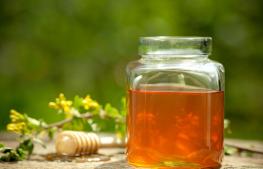Acehúche cheese
"Our goat’s cheese"
Acehúche cheese
Our goat’s cheese
If goat’s cheese is your weakness and you’re passionate about strong, overwhelming cheeses, you need to know about Acehúche cheese, an award-winning product from the province of Cáceres that is obtained from raw milk from Retinta, Verata and Serrana goats and animal rennet.
The result is a semi-hard, full-fat cheese with a compact texture and white colour, a slightly spicy taste, reaching maturity after two months.
It comes in small pieces that are usually less than one kilo, after being produced and pressed in chestnut or tin moulds.
Craft beers
" International recognition"
Craft beers
International recognition
More and more people are wanting to try real beers and different flavours, which has led to the popularity of craft beers skyrocketing in recent years.
Each craft beer takes you somewhere different, and this is only achieved thanks to the hard work done by small beer producers to create beers with lots of personality and a strong local character.
Dehesa de Extremadura
"The best ham in the world"
Dehesa de Extremadura
The best ham in the world
Extremaduran ham is the best Iberian ham in the world. This is not something that happens by chance.
For a ham to become a delicacy and be covered by the Dehesa de Extremadura Protected Designation of Origin, it is necessary to follow some strictly established steps:
Extremaduran lamb
"Stockbreeding passion"
Extremaduran lamb
Stockbreeding passion
The Protected Geographical Indication covers lambs that graze in the dehesa grasslands of Cáceres and Badajoz and that are reared on mother’s milk for the first 45 days of their lives. Their mothers are Merino breed sheep or crosses with rams from the breeds Merino Precoz, Ile de France and Merinofleischschaf, with 50% of their genotypes having to be Merino. The fathers come from pure or simple hybrids of Merino, Merino Precoz, Ile de France and Merinofleischschaf stock.
Extremaduran Veal
"Extremaduran breeds"
Extremaduran Veal
Extremaduran breeds
The cattle that produce PGI Extremaduran Veal are reared on the Extremaduran dehesa grasslands in all the counties within the region.
The local breeds that graze on the dehesas and that are covered by the PGI are Retinta, Avileña-Negra Ibérica, Morucha, Blanca Cacereña, Berrenda en Negro and Berrenda en Colorado and the crosses between them.
The Blanca Cacereña breed was on the brink of disappearing in the mid-1970s. This breed and its crosses with black stock resulted in the Barroso Extremeño variant.
Figs
"The biggest fig producers"
Figs
The biggest fig producers
Spain is the largest fig producer in Western Europe and, by region, Extremadura is leader in area and cultivation of fig trees. Although production is very localised, one town stands out in the region for fig growing: Almoharín, in the county of Montánchez y Tamuja.
Its success lies in the cultivation of Calabacita variety figs, which have excellent nutritional quality and have been established in the town for many decades, thanks in particular to the microclimate that comes from the Sierra de San Cristóbal mountains.
Gata-Hurdes Oil
"Manzanilla olive oil from Cáceres"
Gata-Hurdes Oil
Manzanilla olive oil from Cáceres
The Gata-Hurdes Protected Designation of Origin includes the counties of Fata, Hurdes, Trasierra, Tierras de Granadilla, part of Alagón, Ambroz, Jerte and La Vera, covering 84 municipalities in the north of the province of Cáceres.
Guadalupe black pudding
"A must-try food"
Guadalupe black pudding
A must-try food
The black pudding in Guadalupe is made from pork and cabbage. This typical sausage is one of the delicacies you have to try while in Extremadura.
Ibores Cheese
"Extremaduran goat’s cheese"
Ibores Cheese
Extremaduran goat’s cheese
Extremaduran goat’s cheese has its own name: Ibores Cheese. This is a full-fat cheese with a semi-hard rind, ivory in colour, rubbed with paprika or in oil. Its name comes from the county where the largest concentrations of goats are reared in the province of Cáceres, and also where it is made: Ibores, Villuercas, La Jara and Trujillo, and the area around the Villuercas Ibores Jara UNESCO Global Geopark, recognised by UNESCO for its geological value.
Jams and preserves
"Traditional recipes"
Jams and preserves
Traditional recipes
Homemade or artisanal jams are a high-quality product, since they are made with the utmost care, respecting traditional process that have been passed down from generation to generation. They know a lot about this in the Jerte Valley, where they are great producers not only of fruits but also fruit products, such as delicious preserves.
Jerte Cherries
"A landscape with a Picota flavour"
Jerte Cherries
A landscape with a Picota flavour
Cherries came to the Jerte Valley with the Moors, although they had already been being grown in Spain since Roman times. Today, the Jerte Cherry, which benefits from Protected Designation of Origin, has become the economic driver for the three valleys in the north of Cáceres: Jerte, La Vera and Ambroz.
The economy and culture revolve around this prized produce, from when it blossoms to when it is harvested and distributed.
La Vera paprika
"Tradition and product"
La Vera paprika
Tradition and product
La Vera paprika has its history in the province of Cáceres thanks to Holy Roman Emperor Charles V. The famed paprika, which currently has its own Protected Designation of Origin, was introduced in Spain after the conquest of the Americas, in the Royal Monastery of Guadalupe.
The monks there were pioneers in using it in the country and, a short time later, it was introduced in the Monastery of Yuste, where the monks grew the peppers and initially used the paprika to preserve sausages and then to season stews.
Liqueurs
"Jerte Picota cherries, the star"
Liqueurs
Jerte Picota cherries, the star
In addition to the export of the fruits, with several million cherries every year, in 1989 the Jerte Valley Cooperatives Group began to distil cherries using a process that today services as the model for production of Jerte Valley Cherry liqueur, the only one in Spain made completely using Picota cherries from this region.
On 25 March 1991, the fruit liqueur distillery was opened in a large event.
The philosophy of the process is based on three pillars: organic fermentation of the fruit, artisanal distillation in a still and no use of colouring or flavouring agents.
Mushrooms
"Autumn’s gift"
Mushrooms
Autumn’s gift
The world of mushrooms and fungi represents a real universe in the province of Cáceres. These products, stars of gastronomy, are generating more and more interest among enthusiasts, who come to our counties to search for the best specimens.
Moreover, their high culinary value has turned them into an interesting niche for economic development. In addition to harvesting, preserving and selling, there are other leisure and tourism services available that reach their peak during the autumn season.
Patatera
"Sausage with potato and paprika"
Patatera
Sausage with potato and paprika
Patatera is a typical type of sausage from Cáceres and the rest of Extremadura made from Iberian pork cheek and boiled potatoes, seasoned with salt and La Vera paprika, garlic and spices and cured in a drying room. It is also known by the name chorizo patatero.
Ribera del Guadiana
"Wines from the land"
Ribera del Guadiana
Wines from the land
The PDO Ribera del Guadiana is present in two provinces of Extremadura; in the province of Cáceres, it includes the areas of Montánchez, Trujillo and Cañamero.
There are 30 different grape varieties in the PDO. The most important and well known are the Spanish varieties Tempranillo and Macabeo, as well as the local varieties Pardina and Cayetana. The red varieties play a fundamental role in the production of high-quality wines.
In the province of Cáceres, the vines are grown on terraces and are not very widespread, except in some areas of Montánchez.
Rice
"Outstanding national producers"
Rice
Outstanding national producers
Extremadura is one of the leading rice producers at national level. Second only to Andalusia in production, Extremadura has over 25,000 hectares dedicated to rice cultivation. This cultivation is found mainly in Vegas del Guadiana and Cáceres, while the most important town in this area is Miajadas, which is also home to an industrial processing, steaming and packaging plant, an important economic driver in this town and its surroundings.
By variety, Indica (long grain) rice is the main variety grown in the province of Cáceres, followed by Japonica (round grain).
Sweets
"The most indulgent version of Cáceres"
Sweets
The most indulgent version of Cáceres
Lard biscuits such as perrunillas, bollas de chicharrones; marzipan; doughnuts such as roscas fritas, floretas; fried pastries such as pestiños; baked goods such as hornazos; different types of sweet fritters such as perrillos, sapillos or repápalos con leche, roscas de muégado... The confectioner tradition in Cáceres goes back centuries, to when the Jews and Moors left their mark on the cuisine with use of ingredients from their homelands and Portuguese culinary trends leveraged their influence as well.
Tomatoes
"Miajadas, tomato capital"
Tomatoes
Miajadas, tomato capital
The town of Miajadas, in the south of the province of Cáceres, is closed linked to irrigated land, where rice and tomato growing play key roles. Tomatoes are the main driver of its economy thanks to the cultivation of this fruit and its use by the various tomato factories that produce tomato products that can be found in nearly every pantry.
Torta del Casar
"The pleasure of creamy cheese"
Torta del Casar
The pleasure of creamy cheese
Torta del Casar is a natural cheese made from Merino Entrefino sheep’s milk from flocks in the geographical area of Llanos de Cáceres, Sierra de Fuentes and Montánchez. This livestock area covers around 400,000 hectares and includes 36 municipalities, and the cheese is then produced in the town of Casar de Cáceres.
Torta del Casar is characterised by its semi-hard yellow rind, which encloses a pearly white cheese with an intense aroma and flavour. Its interior is so creamy that you can sometimes see it oozing out of cracks in the rind, something that makes it so appealing.
Villuercas-Ibores Honey
"Natural foodstuff"
Villuercas-Ibores Honey
Natural foodstuff
The honey with Protected Designation of Origin Villuercas-Ibores Honey is the natural product produced by European honey bees. The traditional production area for Villuercas-Ibores Honey is located in the south-east of the province of Cáceres, occupying the counties of Las Villuercas and Los Ibores, in the area of the Villuercas Ibores Jara UNESCO Global Geopark, recognised by UNESCO for its geological value.
DOP Villuercas-Ibores Honey includes four types of honey based on their flower composition:

